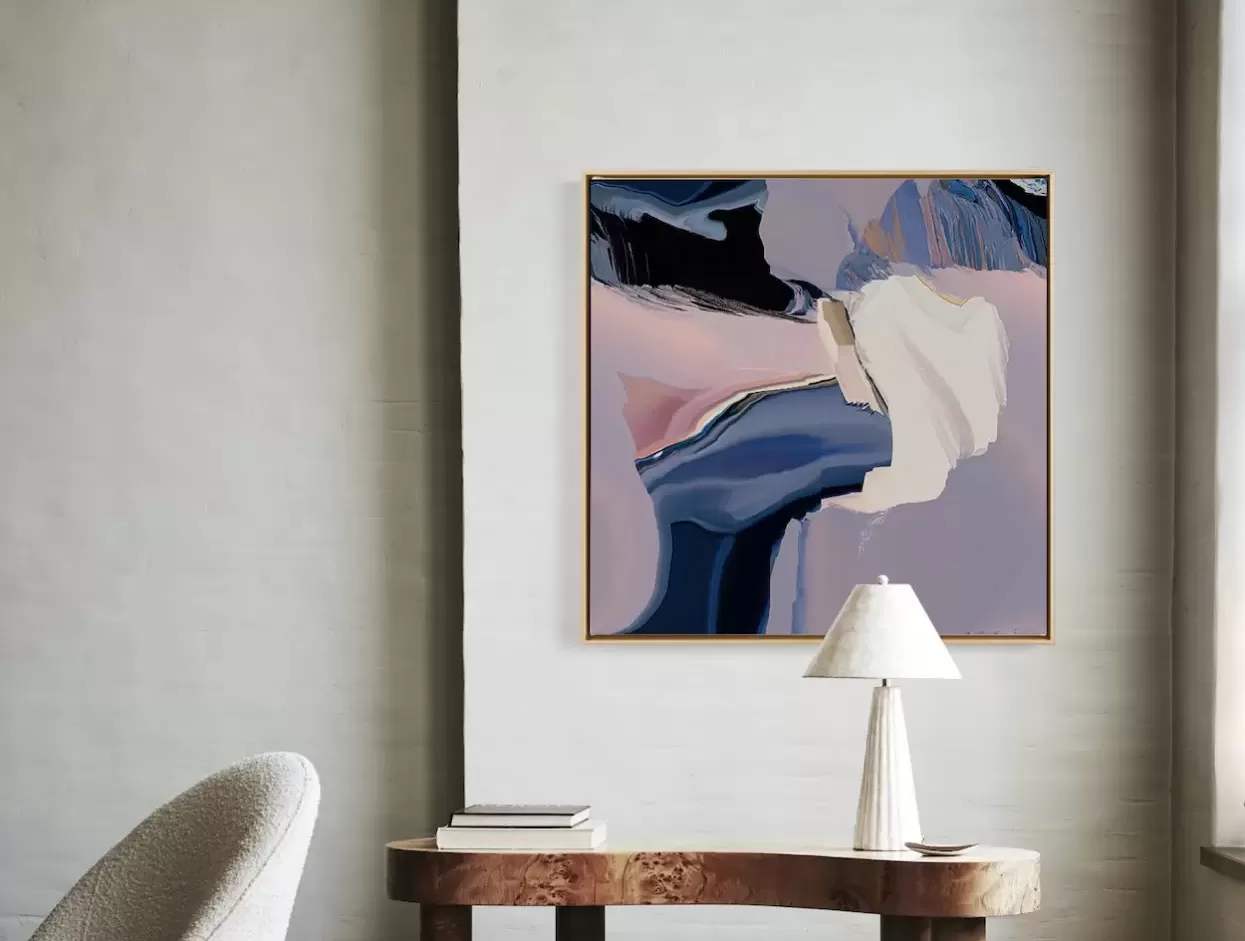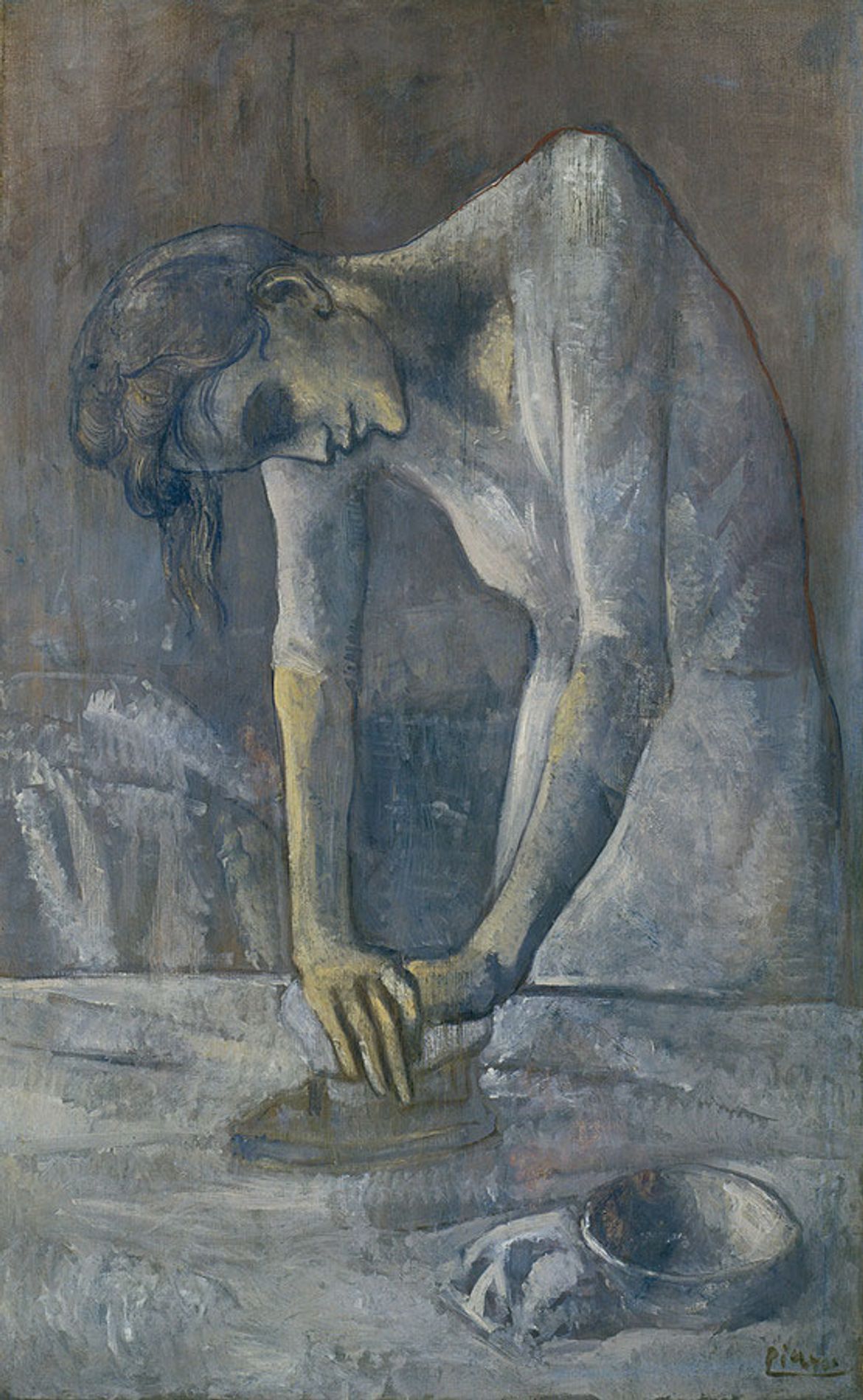Art Market Recap: Catch up with all things Museum, Auction, and NFT related!
A rare Giacometti hits the auction block after being found in an antique shop 60 years ago, Tonic NFT marketplace launches, ancient Roman bathhouse gems uncovered, street art erased in Washington Heights community, and a Guggenheim-owned Picasso caught up in a restitution lawsuit!


Featured image: A print from “Chromesthesia: Ascend” by Jaime Derringer. Photography courtesy of Christiane Lemieux
An Alberto Giacometti chandelier bought for just £250 from a London antique shop is set to sell for millions at an upcoming Christie’s auction carrying an estimate of $1.9 million-$3.7 million. In 1960 John Craxton, a British painter, passed by the Marylebone Road store when he recognized the unique light fixture as a piece once owned by his late friend and benefactor Peter Watson, a collector and patron of the arts.
Watson commissioned “Chandelier for Peter Watson” during a trip to Paris, where Giacometti lived and worked. The piece was originally designed for the office of London literary and arts magazine “Horizon,” which Watson co-founded. The chandelier hung in the office until the magazine’s closure in 1950, when it was packed away into storage. The chandelier likely passed to Horizon cofounder Cyril Connolly, but exactly how it wound up in an antique shop remains a mystery.
“Peter Watson came into his fortune when he was quite young, after his father died, so he had the freedom to explore what he was very passionate about, which was art and literature,” Michelle McMullan, a senior specialist in Impressionist and Modern art at Christie’s London, told Artnet News. “Objects interest me hardly any less than sculpture, and there is a point at which the two touch,” the artist wrote in a 1948 letter to dealer Pierre Matisse.

Alberto Giacometti, Chandelier for Peter Watson. Photo courtesy of Christie’s Images Ltd. 2023.
Gagosian’s former digital lead is spearheading a ‘safe and welcoming’ NFT marketplace with a focus on generative art. Susannah Maybank and Mariam Naficy, the founder of design marketplace Minted are launching Tonic, a new marketplace platform targetted towards seasoned and new crypto collectors to discover and collect fine art NFTs.
“We have ongoing conversations with people from the traditional art world to people who are very embedded in the Web3 community,” Maybank said. “It’s crowdsourced information; we want to make sure it is not just reflecting our own aesthetic choices, but that we represent a plurality of voices, and a diversity in artists and in aesthetics.” While the platform is currently focused on generative art, Maybank added, “we are not militant in that distinction; we are definitely willing to talk to artists working in a range of mediums.”
On January 31, Tonic dropped its inaugural collection, a generative art series titled “Chromesthesia: Ascend” by artist Jaime Derringer (also Tonic’s head of community). Setting itself apart from competitors, Tonic plans to streamline Web3 transactions with credit card payments, a provisional wallet service, and a white-glove concierge to guide newcomers to the space.

Susannah Maybank and Mariam Naficy (Photo: Elisabeth Fall). Courtesy of Tonic.
Archaeologists in the U.K. have uncovered 34 semi-precious stones in the drain of a Roman bathhouse located on Carlisle in Cumbria. The treasures consisted of variously cut amethyst, jasper, and cornelian, and date back to the 3rd century. The intaglios were discovered in the drain of the Severan bathhouse, located not far from Hadrian’s Wall, which was built in 122 C.E. to fortify the northwest border of the Roman Empire.
The semi-precious intaglios have been engraved with intricate scenes and icons and indicate fine craftsmanship with the delicate details of the gems. Archaeologists have theorized that the gems would have been highly valuable items that were once set into finger rings with vegetable glue.
“We believe they are lost as a result of the hot, steamy, and wet environment of a Roman bathhouse,” Frank Giecco, the technical director of engineering consultancy Wardell Armstrong who led the dig, told Arnet News. “Gems might easily become detached from signet rings, or the entire ring detached from the finger and washed down the drain.” A few gems were found alongside hairpins, which suggests that the gems were likely those of affluent women rather than men. The distinct style of the red jasper intaglios that were found also led archeologists to a particular jewelry workshop that supplied the zone of Hadrian’s Wall.
Frank Giecco, the technical director of engineering consultancy Wardell Armstrong who led the dig, commented that “The intaglios can be seen on many levels, from pieces of art to connections to the individuals who owned them.”

A selection of the intaglios found at the Carlisle site. (Anna Giecco/ Wardell Armstrong)
Residents of Washington Heights are fighting back after New York City’s Department of Transportation (DOT) painted over the murals and graffiti that decorated the 191st Street Subway tunnel in an attempt to tidy up the pedestrian throughway. Although the city has since released a statement explaining that new murals are planned for the tunnels, the community is upset that the original artwork has been covered without consultation.
Although the tunnel has regular complaints from the community regarding drug and other crimes, the original graffiti and artwork was a source of pride for the area. “What happened here is just a slap in the face to the community,” Washington Heights resident Luiggy Gomez told Gothamist. “They erased history.” The original murals were part of a 2015 DOT-sponsored beautification project that had five local artists contribute works in the 1000-foot-long tunnel with geometric shapes, jungle scenes and affirmations. Notably, the project included a work by New York graffiti legend Fernando “Cope2” Carlo Jr.’s Art Is Life, which encouraged pedestrians to “Follow Your Dreams”.
However, since the murals were painted in 2015, graffiti artists have tagged all over them. “To be honest, it did need a paint job, right? But what it needed was for the murals to be maintained. The murals were gorgeous,” Led Black, the founder of a blog called The Uptown Collective, said. “They were important to this community and they celebrated this community.”

Before image: Fernando “Cope2” Carlo Jr.’s contribution to a 2015 beautification project at the 191st Street tunnel, Art Is Life”. PHOTO COURTESY OF THE NEW YORK CITY DEPARTMENT OF TRANSPORTATION

After
A $200 million Picasso painting is embroiled in a lawsuit against the Guggenheim in New York. The Jewish descendants of the owner of the painting are demanding the artwork be returned to its rightful owners. The painting in question — Pablo Picasso’s 1904 “Woman Ironing” — has been hanging at Guggenheim Museum since 1978, according to Art Forum magazine.
The work was purchased by Karl Adler, a German Jew, in 1916 from an art gallery in Munich. In 1938, fearing the rise of Nazism in Europe, Adler sold it back to the gallery under duress for about one-ninth of its value and used the money to escape his homeland. The suit claims Adler was under extreme pressure to sell the painting due to the 1935 antisemitic Nuremberg Laws. Additionally, Nazi Germany’s “flight tax,” which stripped fleeing citizens of their belongings upon leaving the country, was also a motivation to sell the work.
The sale fetched Adler $1,552 (roughly $32,000 today), which the suit says is proof that it was made under duress. The family first contacted the museum in 2017 and in 2021 demanded the painting’s return under the 2016 Holocaust Expropriated Art Recovery Act. “Adler would not have disposed of the painting at the time and price that he did, but for the Nazi persecution to which he and his family had been, and would continue to be, subjected,” the suit reads.
The Guggenheim Museum has said that while it “takes provenance matters and restitution claims extremely seriously,” the suit was “without merit.”
The museum claimed that it had tried to contact Adler’s son, Eric Adler, as well as other family members in the 1970s but that none expressed concern or interest in the painting’s ownership.
“It is unclear on what basis claimants—more than 80 years after Adler’s sale of ‘Woman Ironing’—appear to have come to a view as to the fairness of the transaction that neither Karl Adler nor his immediate descendants appear to have ever expressed, even when the Guggenheim contacted the family directly to ask,” said museum spokesperson Sara Fox in a statement.

Pablo Picasso, “Woman Ironing,” 1904. (Estate of Pablo Picasso/Artists Rights Society (ARS), New York; via Solomon R. Guggenheim Museum, New York)





